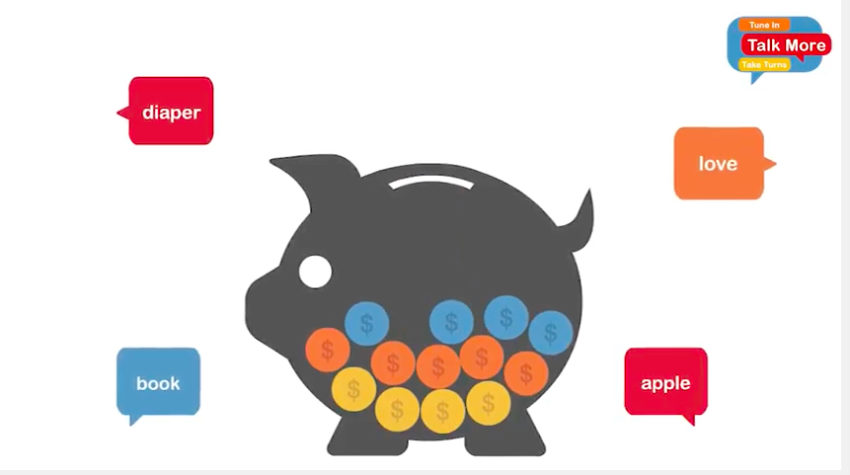SCI, University of Chicago research partnership is boosting parent knowledge
- April 19, 2019
- / Shannon Nickinson
- / early-learning

Pensacola moms have made the big leagues, thanks to Studer Community Institute and the University of Chicago.
SCI and the world-renowned research university have been partners in looking at how communities can collaborate to help parents learn more — and do more — to help fuel the brain development of young children.
That healthy brain growth is the fuel that drives language acquisition, cognitive growth, school readiness — and hopefully success in school and life.
And now we have some preliminary data to show from this collaboration.
In the summer of 2018, moms at Baptist, Sacred Heart and West Florida got the chance to join a research pool that could change the postpartum experience for women everywhere.
Kristin Leffel is research operations and strategic operations at the TMW Center for Early Learning and Public Health. She is part of the team that has been working in partnership with SCI to see how this particular research tool could be used to reach a wider audience.
Leffel said that the TMW team presented a poster at the Society for Research in Child Development conference in Baltimore in March 2019 about the Pensacola project.
The findings are based on preliminary analysis of the 994 moms who were part of the group, including 657 women in Escambia County, Florida. The others are from Chicago-area hospitals.
In TMW Newborn, moms are presented a survey on an iPad. It asks them questions about how babies’ brains develop and how they learn and process language.
Moms are then shown a video that highlights some key teaching points about how parent talk and interaction influences a child’s brain development.
Then moms are asked the same questions again to try to see what they learned from the video.
The video is in four versions: a short version (about 7 minutes); a long version (about 14 minutes); a short version with questions that pop up to interrupt the video (parents must answer for the video to continue playing); and a long version with the interstitial questions.
The findings so far:
— Moms from both education level groups increased their knowledge about brain and language development.
— The video with interstitial questions helped moms with a lower educational attainment level learn more than the video without questions. The interstitial questions had no impact on the learning gains made by moms with a 4-year degree or higher.
— There was no significant difference in knowledge gains between the long and short versions of the videos.
— It also shows, the study authors say, that such an intervention can be made part of routine postpartum care by healthcare professionals — and it will be successful.
“We still have more to learn and explore in the data, particularly to try to get a better understanding of who the people are who opt out of the video, and what kind of selection bias that introduces,” Leffel said. “We’re digging into that data more right now. We’re also looking into when in the intervention workflow people drop out to better understand how we need to support the implementation.
“We’re starting to explore how it might look for TMW-Newborn to be implemented in standard care, rather than in the context of a research study,” she said.
The video originally was tested with nearly 600 families in two Chicago-area hospitals. Pensacola is the first outside pilot of the project. The participation rate for the pilot study in Chicago was at 25 percent.
Our participation rates are:
— West Florida: 52 percent.
— Baptist: 80 percent.
— Sacred Heart: 48 percent.
We are excited to continue this journey — and to see what the next steps may be as we work to build Pensacola into an Early Learning City.
About the moms who participated:
— 64% were between 18-30; 33% were 31-40.
— 69% had less than a bachelor’s degree; 31% did have a bachelor’s degree or higher.
— 55% earned 200% of the federal poverty level or less; 45% earned more than that.
 CivicCon launches with a look at good growth in cities
CivicCon launches with a look at good growth in cities
 Building stronger brains one baby, one parent at a time
Building stronger brains one baby, one parent at a time
 SCI debuts commercial on Early Learning City
SCI debuts commercial on Early Learning City
 Entrecon: World class speakers and an opportunity to sharpen skills
Entrecon: World class speakers and an opportunity to sharpen skills
 PYP Quality of Life survey 2017
PYP Quality of Life survey 2017
 EntreCon Pensacola 2016: A look back
EntreCon Pensacola 2016: A look back
 Leadership tip: getting better employee takeaways
Leadership tip: getting better employee takeaways
 Leadership tip: be interested instead of interesting
Leadership tip: be interested instead of interesting
 Leadership tip: delivering difficult messages
Leadership tip: delivering difficult messages
 Brain Bags boost Arc, Early Childhood Court programs
Brain Bags boost Arc, Early Childhood Court programs